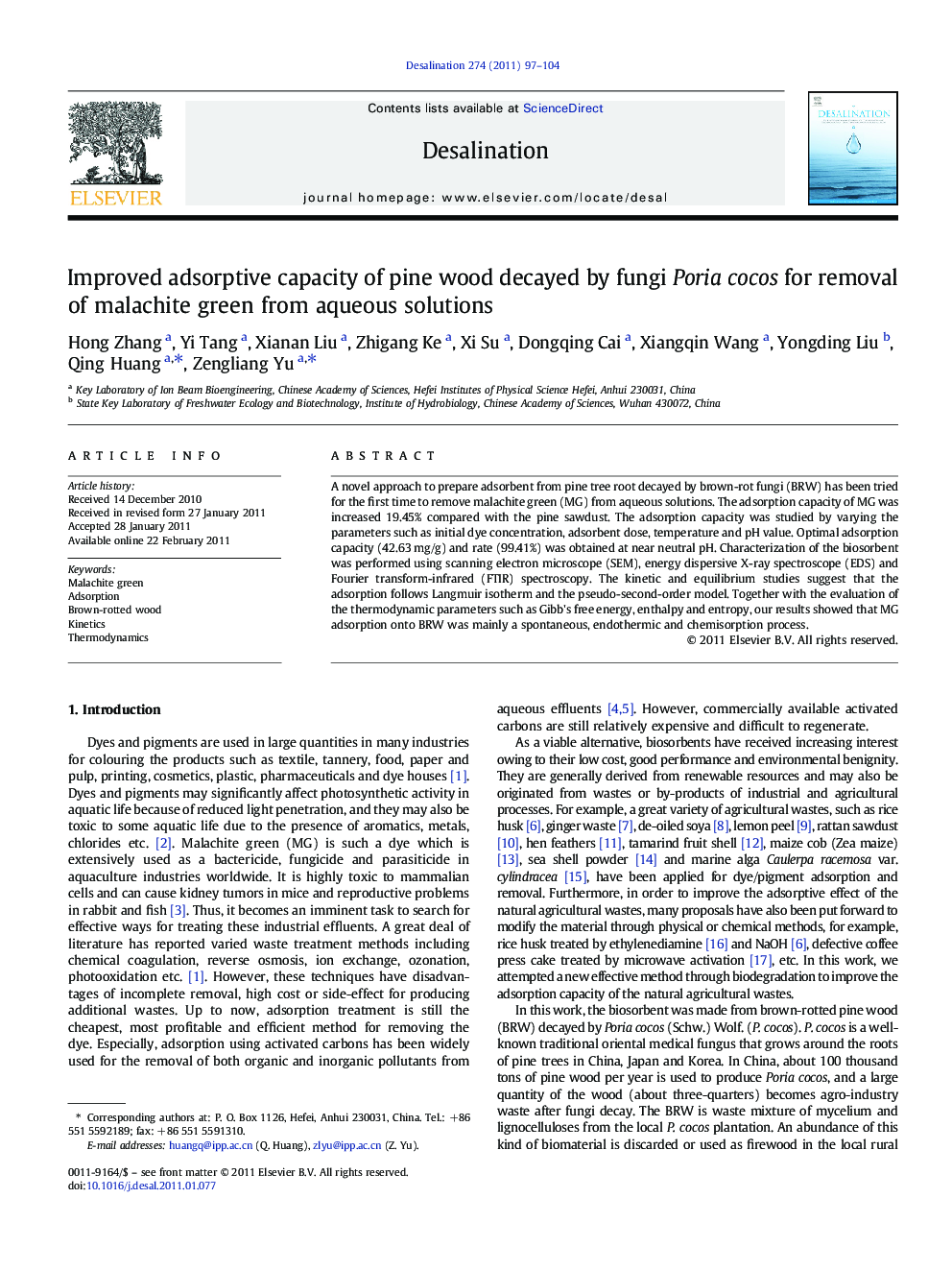| Article ID | Journal | Published Year | Pages | File Type |
|---|---|---|---|---|
| 625113 | Desalination | 2011 | 8 Pages |
A novel approach to prepare adsorbent from pine tree root decayed by brown-rot fungi (BRW) has been tried for the first time to remove malachite green (MG) from aqueous solutions. The adsorption capacity of MG was increased 19.45% compared with the pine sawdust. The adsorption capacity was studied by varying the parameters such as initial dye concentration, adsorbent dose, temperature and pH value. Optimal adsorption capacity (42.63 mg/g) and rate (99.41%) was obtained at near neutral pH. Characterization of the biosorbent was performed using scanning electron microscope (SEM), energy dispersive X-ray spectroscope (EDS) and Fourier transform-infrared (FTIR) spectroscopy. The kinetic and equilibrium studies suggest that the adsorption follows Langmuir isotherm and the pseudo-second-order model. Together with the evaluation of the thermodynamic parameters such as Gibb's free energy, enthalpy and entropy, our results showed that MG adsorption onto BRW was mainly a spontaneous, endothermic and chemisorption process.
Research highlights► A novel way of preparing biosorbent: pine wood decayed by fungi Poria cocos. ► Adsorb malachite green very effectively: up to 99.41% under the optimal conditions. ► Easy, cheap and practical: costs only ca. $6/100 kg in China. ► Detailed in equilibrium, kinetic and thermodynamic analysis.
